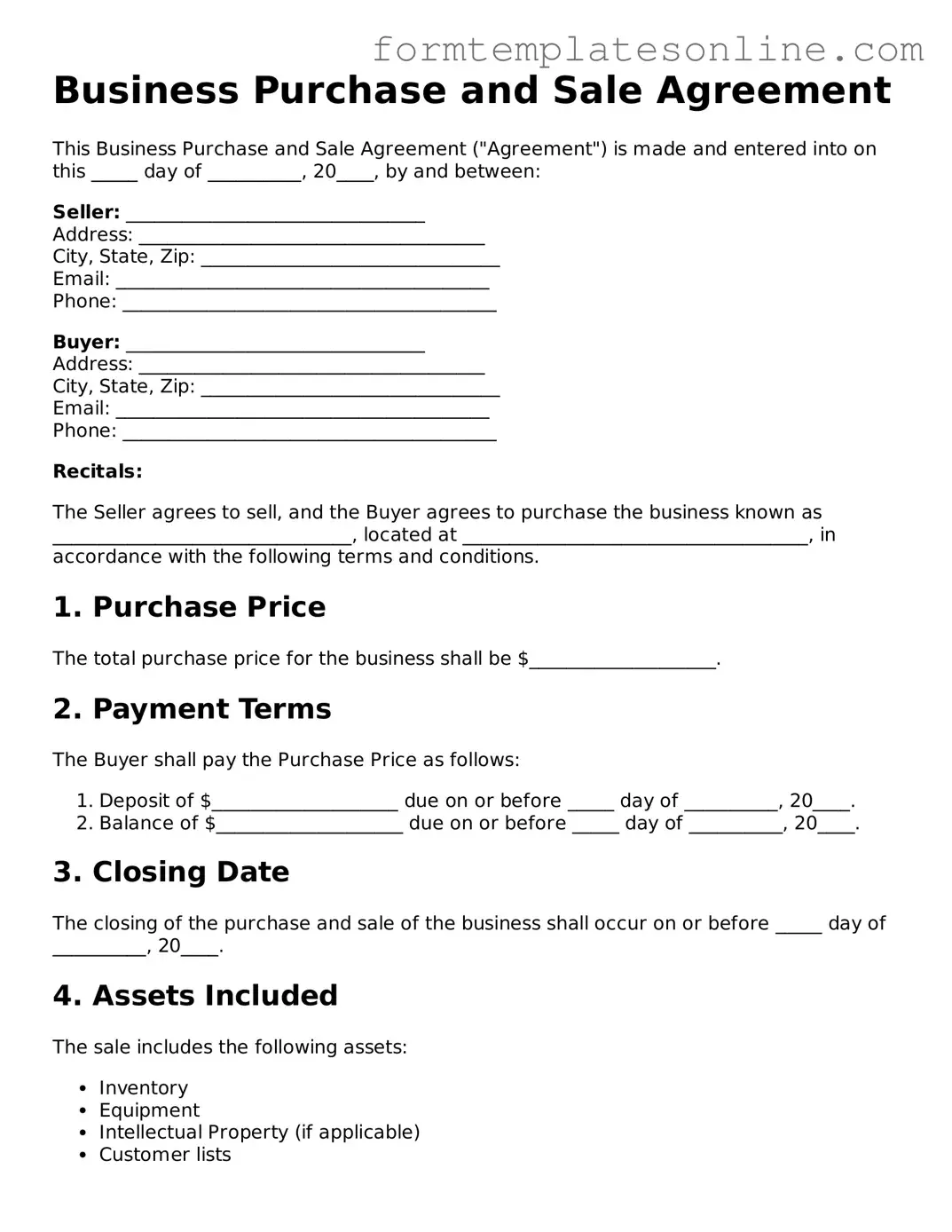Business Purchase and Sale Agreement
This Business Purchase and Sale Agreement ("Agreement") is made and entered into on this _____ day of __________, 20____, by and between:
Seller: ________________________________
Address: _____________________________________
City, State, Zip: ________________________________
Email: ________________________________________
Phone: ________________________________________
Buyer: ________________________________
Address: _____________________________________
City, State, Zip: ________________________________
Email: ________________________________________
Phone: ________________________________________
Recitals:
The Seller agrees to sell, and the Buyer agrees to purchase the business known as ________________________________, located at _____________________________________, in accordance with the following terms and conditions.
1. Purchase Price
The total purchase price for the business shall be $____________________.
2. Payment Terms
The Buyer shall pay the Purchase Price as follows:
- Deposit of $____________________ due on or before _____ day of __________, 20____.
- Balance of $____________________ due on or before _____ day of __________, 20____.
3. Closing Date
The closing of the purchase and sale of the business shall occur on or before _____ day of __________, 20____.
4. Assets Included
The sale includes the following assets:
- Inventory
- Equipment
- Intellectual Property (if applicable)
- Customer lists
5. Representations and Warranties
The Seller represents and warrants that:
- The business is in good standing under the laws of the state of __________.
- All financial records are accurate and available for inspection.
- There are no outstanding legal claims against the business.
6. Governing Law
This Agreement shall be governed by and construed in accordance with the laws of the State of __________.
7. Signatures
By signing below, both parties agree to the terms outlined in this Business Purchase and Sale Agreement.
Seller Signature: ________________________________
Date: ________________________________
Buyer Signature: ________________________________
Date: ________________________________
